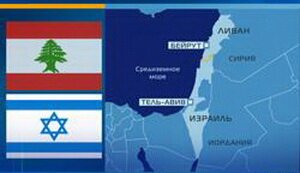
Oleksiy Volovych
The natural gas and oil deposits in the Lebanese energy basin in the Eastern Mediterranean, discovered by the American oil and gas company Noble Energy Mediterranean in 2009–2010, have become almost at once exploration and development target for the countries of the sub-region — Egypt, Israel, Lebanon, Syria, Cyprus, Greece and Turkey.
In 2010, the US Geological Survey previously estimated reserves of hydrocarbons in the Levantine Basin at 3.45 trillion cubic metres of gas and 1.7 billion barrels of oil. According to other data, the potential of the region is much higher — 6.42 trillion cubic metres of gas and 3.8 billion barrels of oil. It should be noted that the Levantine shelf deposits have a rather complicated geological structure. The depth of the sea in the areas of projected mining is up to 2 km, while well drilling, as a rule, is done at depths up to 5–6 km below sea level. Currently, the Levantine Basin includes a group of oil and gas explored and verified fields: Israel's — Leviathan, Tamar and Dalit, Karych and Tanin, Egypt's — Zohr and Nooros, Cyprus' — Aphrodite and Calypso. Lebanon, Syria, Greece and Turkey are still exploring potential deposits on their Mediterranean shelves.
To understand the nature and prospects of resolving the disagreements between Israel and Lebanon over the demarcation of the border area of the sea shelf, we obviously cannot do without analysis of the situation in general that is currently developing in the energy sphere in the Eastern Mediterranean...
The article is available in Ukrainian

